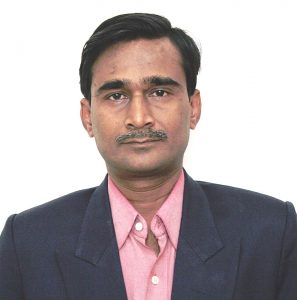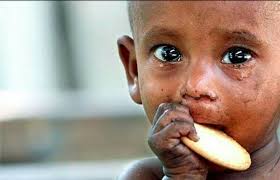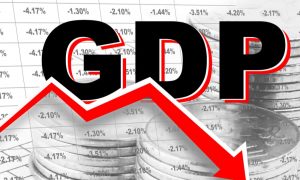 By Nageshwar Patnaik in Bhubaneswar, October 26, 2024: India is a land of paradoxes. How does the 8%-plus Gross Domestic Product (GDP) growth economy coexist with one where the largest number of people in the world live in poverty? One is not sure whether the growth miracle is due to modified economic policies or is a matter of due course or just dumb luck, but it’s certain that India’s growth wheel can’t stop at least for some years.
By Nageshwar Patnaik in Bhubaneswar, October 26, 2024: India is a land of paradoxes. How does the 8%-plus Gross Domestic Product (GDP) growth economy coexist with one where the largest number of people in the world live in poverty? One is not sure whether the growth miracle is due to modified economic policies or is a matter of due course or just dumb luck, but it’s certain that India’s growth wheel can’t stop at least for some years.
The country has been among the fastest growing emerging economies for some time now and a key growth engine contributing 16% to the global growth in 2023, according to the International Monetary Fund (IMF). Its growth rate of 7.2% in FY23 was also the second-highest among the G20 countries and almost twice the average for emerging market economies. Ten years ago, India was the 10th largest economy with $1.9 trillion GDP (current prices). Now, it’s the 5th largest with $3.7 trillion, despite the pandemic and despite inheriting an economy with macro imbalances and a broken financial sector, the Department of Economic Affairs claimed.
In fact, real GDP unexpectedly grew at 8.4% during the December quarter, beating consensus projections of 6.8%. As a result, the full-fiscal GDP growth forecasts were revised upwards from 7.3% to 7.6%. There is a high possibility that growth will touch 8% in FY24. Ironically this year, as many as 23.4 crore individuals have been classified as poor, according to the Global Multidimensional Poverty Index (MPI) 2024 by the United Nations Development Programme (UNDP).
The report reveals that India leads the list, followed by Pakistan with 9.3 crore. The other countries on the list are – Ethiopia with 8.6 crore, Nigeria with 7.4 crore and the Democratic Republic of the Congo with 6.6 crore respectively. Altogether, these countries account for 48.1 percent of the 1.1 billion poor people worldwide. India continues to lead in rural poverty globally, with 83.7 percent of the world’s poor in the country residing in rural areas. In India, the rural-urban gap in poverty rates is also significant.
The last Global Hunger Index report ranked India at 111 among 125 countries by taking into account under nutrition across age groups, stunting and wasting in children and under-five mortality among children. India did worse than some of the poorest African countries. Not surprisingly, the Narendra Modi government rejected the findings though the report makers asserted that the government’s objections with methodology were not founded on facts.
 There are several other reports which speak about the ‘epidemic of hunger in India’. The State of Food Security and Nutrition in the World 2024 report said India is home to 19.46 crore undernourished individuals, the highest in the world. On one hand, people don’t have money to buy adequate food, and on the other hand, they become sick due to no or partial access to a healthy diet. And then they have to spend on buying healthcare services too. This becomes a vicious cycle.
There are several other reports which speak about the ‘epidemic of hunger in India’. The State of Food Security and Nutrition in the World 2024 report said India is home to 19.46 crore undernourished individuals, the highest in the world. On one hand, people don’t have money to buy adequate food, and on the other hand, they become sick due to no or partial access to a healthy diet. And then they have to spend on buying healthcare services too. This becomes a vicious cycle.
The |World Bank cited the lack of education among the youth in India as a major factor for the extreme poverty. “The extreme poverty rate in South Asia is driven by India, where less than 1 percent of the population age 15 or above have no formal education,” the World Bank stated in the Poverty, Prosperity, and Planet Report 2024.
Last year in a report, the NITI Aayog had said that despite these alarming figures, India has made significant strides in reducing multidimensional poverty. The report from 2023 indicates that multidimensional poverty in India decreased from 29.17 percent in 2013-14 to 11.28 percent in 2022-23, meaning that approximately 24.82 crore (248.2 million) people have escaped poverty in the past nine years.
Based on data from the National Family Health Survey (NFHS-5) conducted between 2019-21, 14.96 percent of India’s population is currently classified as multidimensionally poor, down from 24.85 percent in the NFHS-4 (2015-16). This improvement translates to around 13.5 crore individuals moving out of poverty during this five-year span. India has not carried out a poverty survey since 2011. There has not been a consumption expenditure survey since 2014. So, there is no data on income poverty, which is the base of measuring poverty levels.
India was supposed to eradicate poverty by 2022, eight years before the Sustainable Development Goal target year of 2030. Prime Minister Narendra Modi made this promise on September 25, 2017, at a national executive meeting of the ruling Bharatiya Janata Party. This was at the centre of his promised “New India”. Besides, the strength of the domestic demand too has driven the economy to a 7% plus growth rate in the last three years.
 In FY25 too, real GDP growth will likely be closer to 7%, according to the Ministry of Finance. In fact, it believes, there’s considerable scope for the growth rate to rise well above 7% by 2030, thanks to the financial sector and structural reforms. It pegged India to be the world’s third-largest with a $5 trillion GDP in next three years and touch $7 trillion by 2030 and eventually, a developed economy by 2047.
In FY25 too, real GDP growth will likely be closer to 7%, according to the Ministry of Finance. In fact, it believes, there’s considerable scope for the growth rate to rise well above 7% by 2030, thanks to the financial sector and structural reforms. It pegged India to be the world’s third-largest with a $5 trillion GDP in next three years and touch $7 trillion by 2030 and eventually, a developed economy by 2047.
Regardless of when we reach the third spot, there’s no reason for cheer, according to former RBI Governor D Subbarao. “My view, that is possible (India becoming the third-largest economy), but it’s not a celebration. Why? We are a large economy because we are 1.4 billion people. And people are a factor of production. But we are still a poor country,” he said.
2024 is an interesting year. India may surpass Japan in 2025 to be the fourth largest with $4.4 trillion output. But the moot question is will India to continue to be the country of the largest pool of people living in poverty.



Leave a Reply
Be the First to Comment!